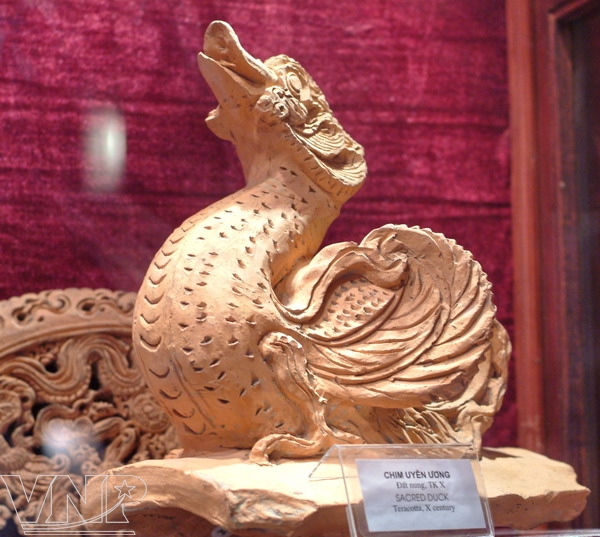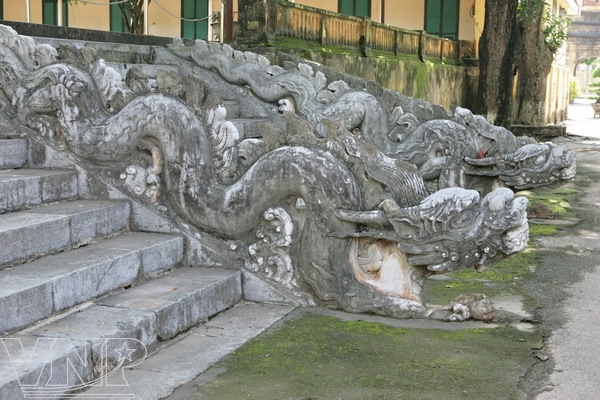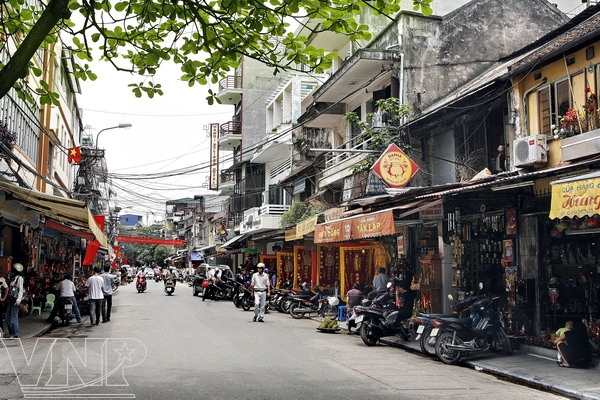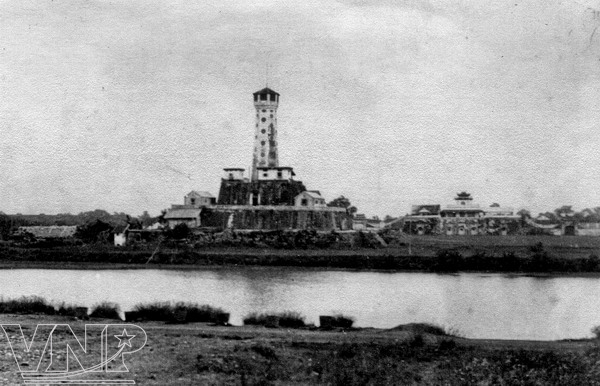The central sector of the Imperial Citadel of Thang Long – Hanoi, which has been recognized as a World Cultural Heritage, covers about 18,000m2, consisting of the archaeological site at No. 18, Hoang Dieu Street and the area of the old Hanoi Citadel. It contains an invaluable cultural treasure which not only symbolizes the national cultural quintessence but also has values of global significance
The heritage site consists of relics on the ground, including the foundation of Kinh Thien Palace from the Le So Dynasty, with stone steps and balconies carved with dragons made in 1467; Doan Mon Gate, the southern gate of the forbidden city of Thang Long; and relics of Hanoi Citadel from the Nguyen Dynasty with Cua Bac (Northern Gate) and the Flag Tower. There still remain some military architectural works of the French from the late 19th century, such as the command office of the French artillery built on a part of the foundation of Kinh Thien Palace. Obviously, due to deterioration from weather, the destruction of wars and human devastation, only a few relics of the millennial Thang Long – Hanoi remain.
Fortunately, many relics and artifacts of different historical periods have been found underground, so many historians and archaeologists said “there is an underground Thang Long – Hanoi”. Although these relics are ruined because they were in the earth, they are full of candour. Notably, the special values of the underground Thang Long – Hanoi” are specifically shown in the central sector of the Imperial Citadel of Thang Long – Hanoi”, a world cultural heritage.
 The northern city gate, one of vestiges kept intact from Thang Long Imperial Citadel |
    Some of valuable artifacts found at the relic site of Thang Long Imperial Citadel |
 The central sector of Thang Long Imperial Citadel, listed as the World Cultural Heritage, consists of relics on the ground, including the foundation of |
 The map of the relic site in the imperial Thang Long – |
 Professor of history Phan Huy Le at an international seminar "Identification of the values of the relic site of Thang Long Imperial Citadel after 5-year research and comparison (2004-2008)". |
 the central sector of Thang Long Imperial Citadel is not huge, but it contains invaluable cultural heritage of mankind |
 |
In 1998 an exploration excavation at Doan Mon, Cua Bac and Hau Lau found many relics and artifacts from the Ly and Tran Dynasties. In 2008 another excavation at the site between Doan Mon and the foundation of Kinh Thien Palace found vestiges of the court in front of the royal palace from the Le Dynasty, which was built with wooden bricks, a typical type of that time. Particularly, from December 2002 to 2004 an archaeological excavation was carried out at No. 18 Hoang Dieu Street and found a complex of relics and artifacts on an area of 19,000m2 which date back to the pre-Thang Long time before the 11th century through Thang Long to Hanoi time. Later, the excavation area was expanded to 33,000 m2 where overlapping cultural layers with relics of architecture, sewerage systems, water wells, foundations, pillars and walls and vestiges of old rivers and lakes were discovered. All these show the continuous history and culture with diverse layers of a palace area which had existed through different historical periods. The centre sector of the Imperial Citadel of Thang Long – Hanoi has three outstanding characteristics:
Firstly, although the heritage area is not large, it was a centre of power and culture for 13 consecutive centuries (from the 7th century up to now), including over eight centuries (from the Ly Dynasty in the 11th century to the Le Dynasty in the late 18th century) as a political and administrative centre of a nation, which developed early in Southeast Asia, until today. This is a unique characteristic rarely seen in the history of other imperial cities in the world.
Secondly, as a centre of power and a centre of the imperial citadel, the heritage area contains a fusion of historical and cultural values of the nation. The forbidden city served as the working place of the court where political, cultural, religious and diplomatic ceremonies of the royal dynasty were held, and was the residence of the royal family. So it was home to palaces, castles with architectural art and technique, construction plans and landscape building which were carried out by talented people. The excavation has found relics of many large-scale palaces of different types, beautiful decorative items and utensils of high technical and artistic value of the royal family. It may be said that the heritage site reveals the cultural quintessence of a nation.
Thirdly, when setting up the capital city in Thang Long, King Ly Thai To considered this place as “a position between the earth and the heaven”, “a position between the North and South, East and West”, which “overlooks the river and leans against the mountains”, “an essential meeting place of the four directions”, etc. In terms of natural conditions, Thang Long was the centre of the Red River delta, a cradle of the wet rice civilization of the Viet people and the hub of domestic and international water-way transport system via the Red River axis. It was due to this favourable position and the construction efforts of the royal dynasties, Thang Long has become an eternal capital city until now. It was this position that helped the heritage site have broad contacts and interactions with the world, which is shown in the fact that many artifacts coming from West Asia, China, Japan, Korea, etc., were found in the archaeological relic site.
From these outstanding characteristics, the central sector of the Imperial Citadel of Thang Long – Hanoi bears not only the quintessence of national cultural values but also of globally significant values, meeting the criteria (2, 3 and 4) of the world cultural heritage.
For these reasons the heritage site was classified as a relic of national-level on December, 28, 2007 and of special national-level on August 12, 2009. In particular, on July 31, 2010 (August 1, 2010 of Vietnamese time), at the 34th session of UNESCO’s World Heritage Committee held in Brazil, the Central Sector of the Imperial Citadel of Thang Long – Hanoi was list as the World Cultural Heritage.
Story: Prof. Phan Huy Le (President of the Vietnam Association of History Science)
Photos: Hoang Ha – Nam Suong – File
lephuong







